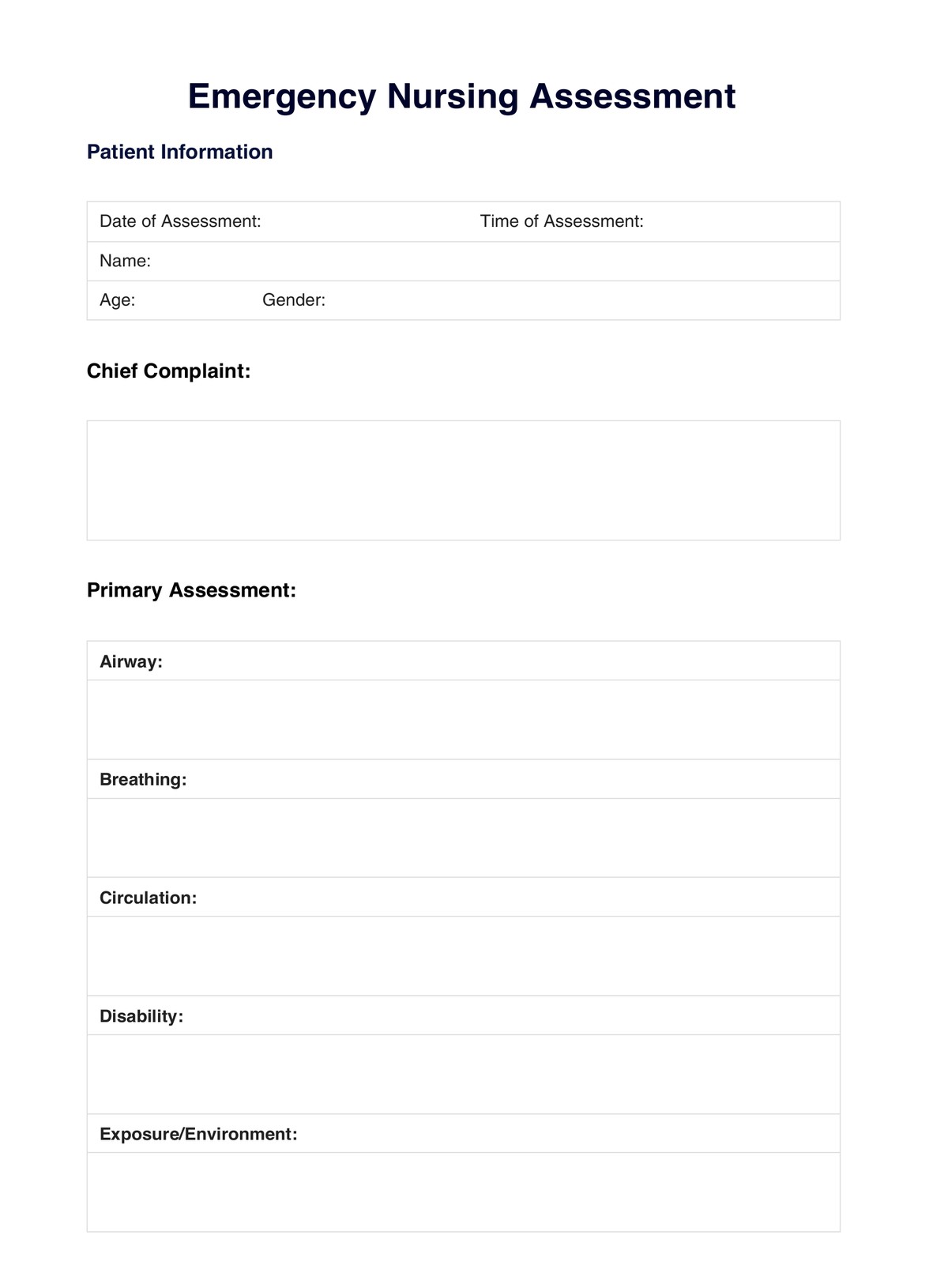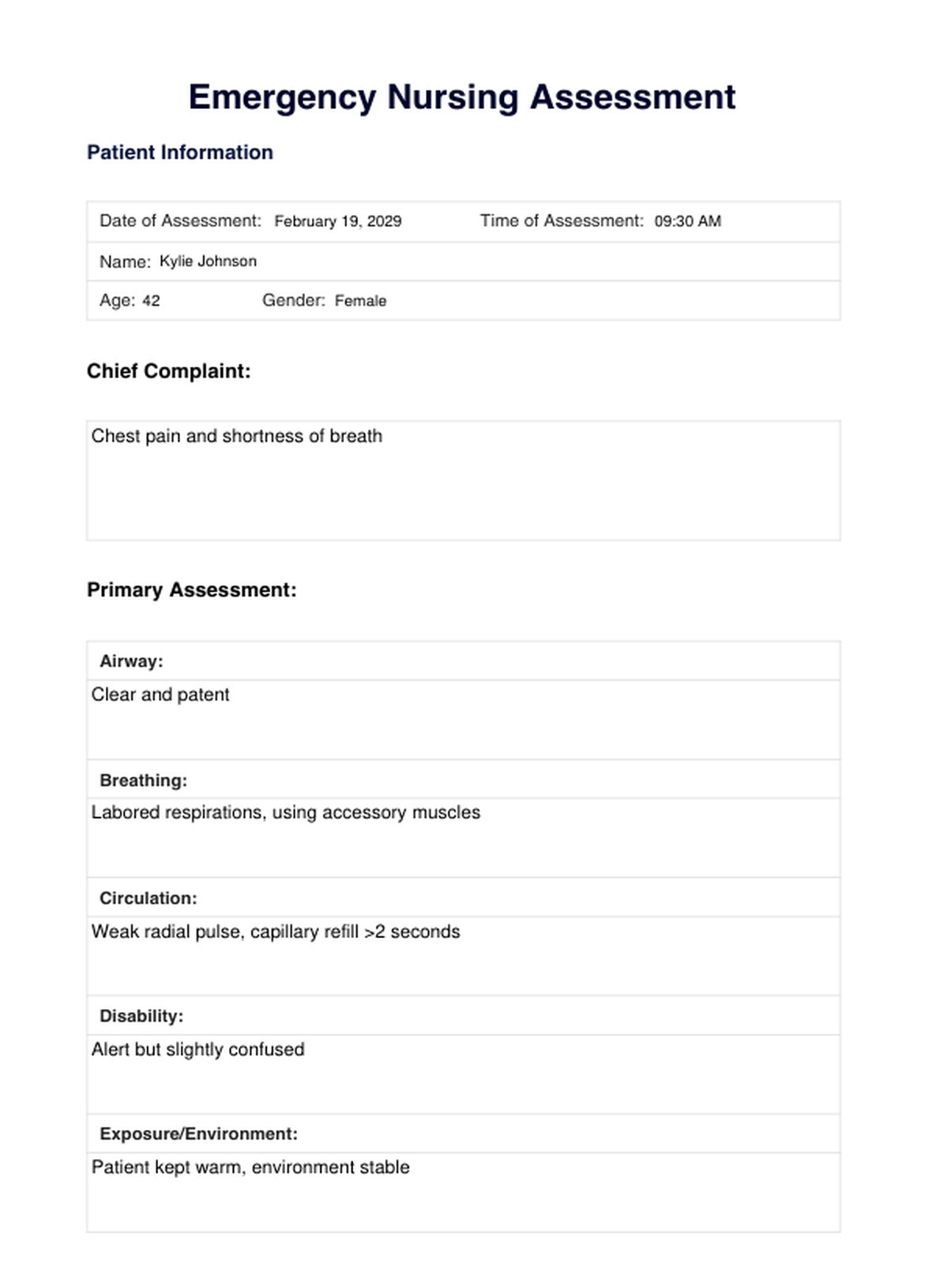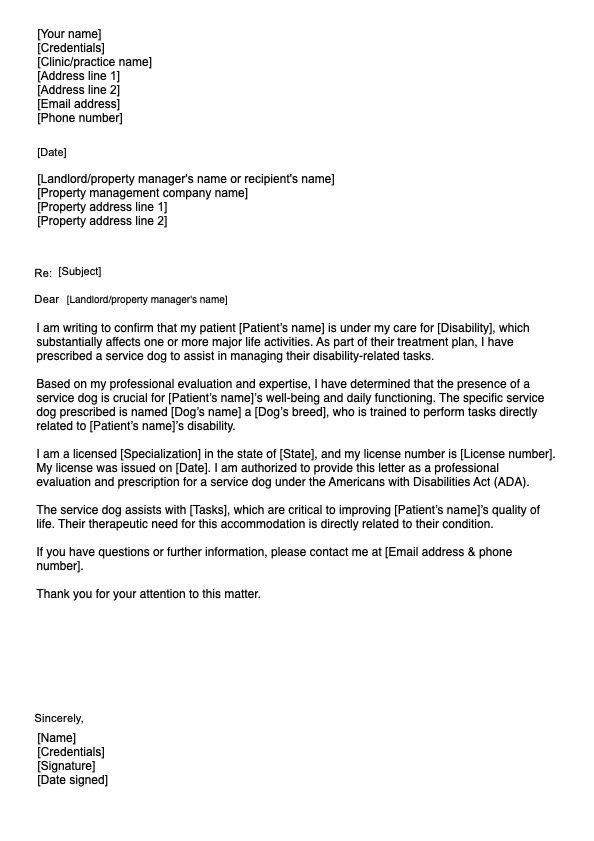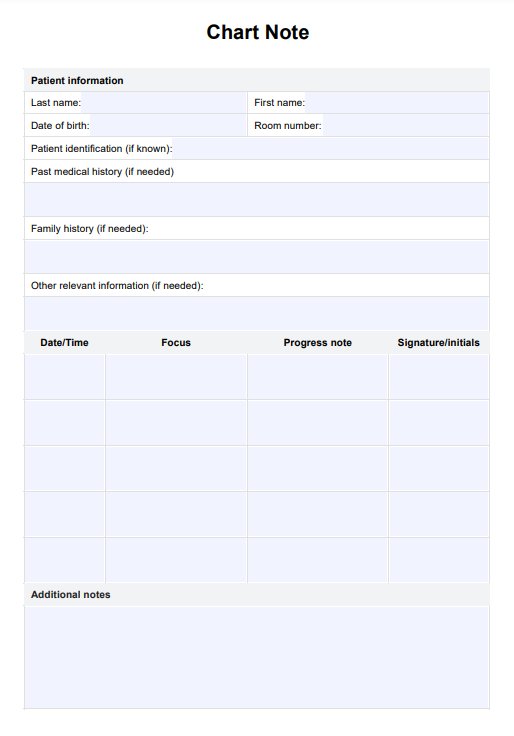Emergency Nursing Assessment
Learn about the role of emergency nurses and the importance of conducting assessments. Download a free Emergency Nursing Assessment template today!


What is an emergency room nurse?
Emergency room nurses, also known as emergency nurses, are essential healthcare professionals within hospitals' emergency departments (EDs). They specialize in providing immediate and comprehensive care to patients facing urgent medical situations. Emergency nurses are at the frontline of the healthcare system, responding to diverse and often critical patient needs.
Emergency Nursing Assessment Template
Emergency Nursing Assessment Example
What are an emergency room nurse's responsibilities?
Emergency room nurses undertake a multitude of responsibilities to ensure efficient and effective patient care within the dynamic environment of the emergency department:
- Conducting initial assessments: Emergency nurses perform rapid yet thorough initial assessments of patients upon their arrival in the emergency department. This involves gathering critical information about the patient's medical history, symptoms, and condition.
- Performing triage: Triage is a crucial aspect of emergency nursing practice. Nurses prioritize patient care based on the severity of their condition, ensuring that those with life-threatening emergencies receive immediate attention.
- Administering medications and treatments: Emergency nurses are responsible for administering medications and treatments as healthcare providers prescribe. They must ensure accurate dosing and monitor patient responses closely.
- Monitoring vital signs and response to treatment: Continuous monitoring of patient vital signs is imperative in the emergency department. Nurses closely observe changes in vital signs and assess patient responses to treatments and interventions.
- Collaborating with healthcare team members: Collaboration is critical to delivering comprehensive patient care in the emergency department. Nurses work closely with physicians, paramedics, technicians, and other healthcare professionals to coordinate care and ensure timely interventions.
- Providing emotional support: In addition to addressing patients' physical needs, emergency nurses offer emotional support to patients and their families during times of crisis. They communicate information compassionately and help alleviate anxiety and distress.
What is an Emergency Nursing Assessment?
An Emergency Nursing Assessment is a systematic process through which emergency nurses evaluate and gather essential information about a patient's condition upon arrival at the emergency department. This assessment is fundamental in identifying life-threatening conditions, determining appropriate interventions, and initiating timely treatment. It involves clinical examination, patient history review, and collaborative decision-making to ensure patient safety and optimal outcomes.
Rooted in nursing science and best practices, it is the foundation for subsequent patient care interventions and establishes a baseline for monitoring clinical performance. In emergency nursing in Australasia and global healthcare systems, the assessment is a critical component of patient care delivery, aimed at minimizing clinical deterioration and enhancing overall patient safety.
As emergency nurses continue to evolve their nursing practice, the Emergency Nursing Assessment remains a cornerstone of high-quality emergency care, reflecting the profession's commitment to excellence and dedication to meeting the changing needs of patients in crisis.
How does our Emergency Nursing Assessment template work?
Here's a step-by-step guide outlining the key components of the emergency nursing assessment process:
1. Primary assessment
The primary assessment in emergency nursing constitutes the crucial first step upon a patient's arrival in the emergency department. It involves a rapid yet comprehensive evaluation to identify and promptly address life-threatening conditions. Emergency nurses prioritize assessing the patient's airway, breathing, circulation, and neurological status while ensuring proper exposure and environmental control.
2. Secondary assessment
Following the primary assessment, emergency nurses conduct a thorough secondary assessment to gather detailed information about the patient's health. This comprehensive evaluation encompasses a systematic review of the patient's medical history, including pertinent symptoms, past medical conditions, medications, allergies, and social history.
3. Diagnostic tests
Based on the findings from the primary and secondary assessments, emergency nurses may order diagnostic tests to evaluate the patient's condition further and confirm or rule out potential diagnoses. These diagnostic modalities may include radiographic studies such as X-rays to assess for fractures or dislocations, blood tests to evaluate blood chemistry and organ function, and electrocardiograms (ECGs) to assess cardiac rhythm and detect signs of cardiac ischemia or infarction.
4. Formulating a care plan
Drawing upon the findings from the primary assessment, secondary assessment, and diagnostic tests, emergency nurses collaborate with other healthcare team members to develop a comprehensive care plan tailored to the patient's needs. The care plan encompasses medical interventions, surgical consultations if necessary, referrals to specialty services or consultants, and patient education regarding their condition and follow-up care instructions.
What do emergency room nurses do after accomplishing the assessment?
After completing the assessment, emergency room nurses engage in a multifaceted approach to patient care. They collaborate closely with healthcare providers, including physicians and specialists, to develop and implement individualized treatment plans tailored to each patient's needs.
This collaboration ensures that patients receive timely and appropriate interventions to address their medical conditions and promote recovery.
What are the benefits of an Emergency Nursing Assessment?
Here are some of the benefits of conducting an Emergency Nursing Assessment:
Early identification of life-threatening conditions
One of the primary benefits of conducting an Emergency Nursing Assessment is the ability to identify life-threatening conditions promptly. Through systematic evaluation and observation, nurses can recognize critical signs and symptoms indicative of serious medical emergencies such as heart attacks, strokes, or severe trauma.
Optimized resource allocation
By conducting a comprehensive assessment, emergency nurses can prioritize patient care needs and allocate resources accordingly. Triage decisions, treatment plans, and diagnostic testing orders are informed by the assessment findings, ensuring that resources such as medical personnel, equipment, and medications are utilized efficiently and directed toward patients with the greatest need.
Facilitation of interdisciplinary communication and collaboration
The Emergency Nursing Assessment is a common framework for communication and collaboration among interdisciplinary healthcare team members. By documenting assessment findings and care plans, nurses facilitate effective communication with physicians, specialists, paramedics, and other healthcare professionals involved in the patient's care.
Enhanced patient safety and satisfaction
Conducting a thorough Emergency Nursing Assessment enhances patient safety by identifying potential risks and implementing appropriate mitigation measures. By addressing patients' physical and psychological needs comprehensively, nurses create a safe and supportive environment conducive to healing and recovery.
Commonly asked questions
Accomplishing a thorough emergency nursing assessment is crucial as it allows nurses to rapidly identify critical conditions, prioritize care, and initiate timely interventions, ultimately saving lives and improving patient outcomes.
Emergency Nursing Assessments are typically performed upon patient arrival and throughout their stay in the emergency department as needed.
Documentation includes detailed notes of assessment findings, interventions, and patient responses, adhering to hospital and regulatory standards.


















































































































